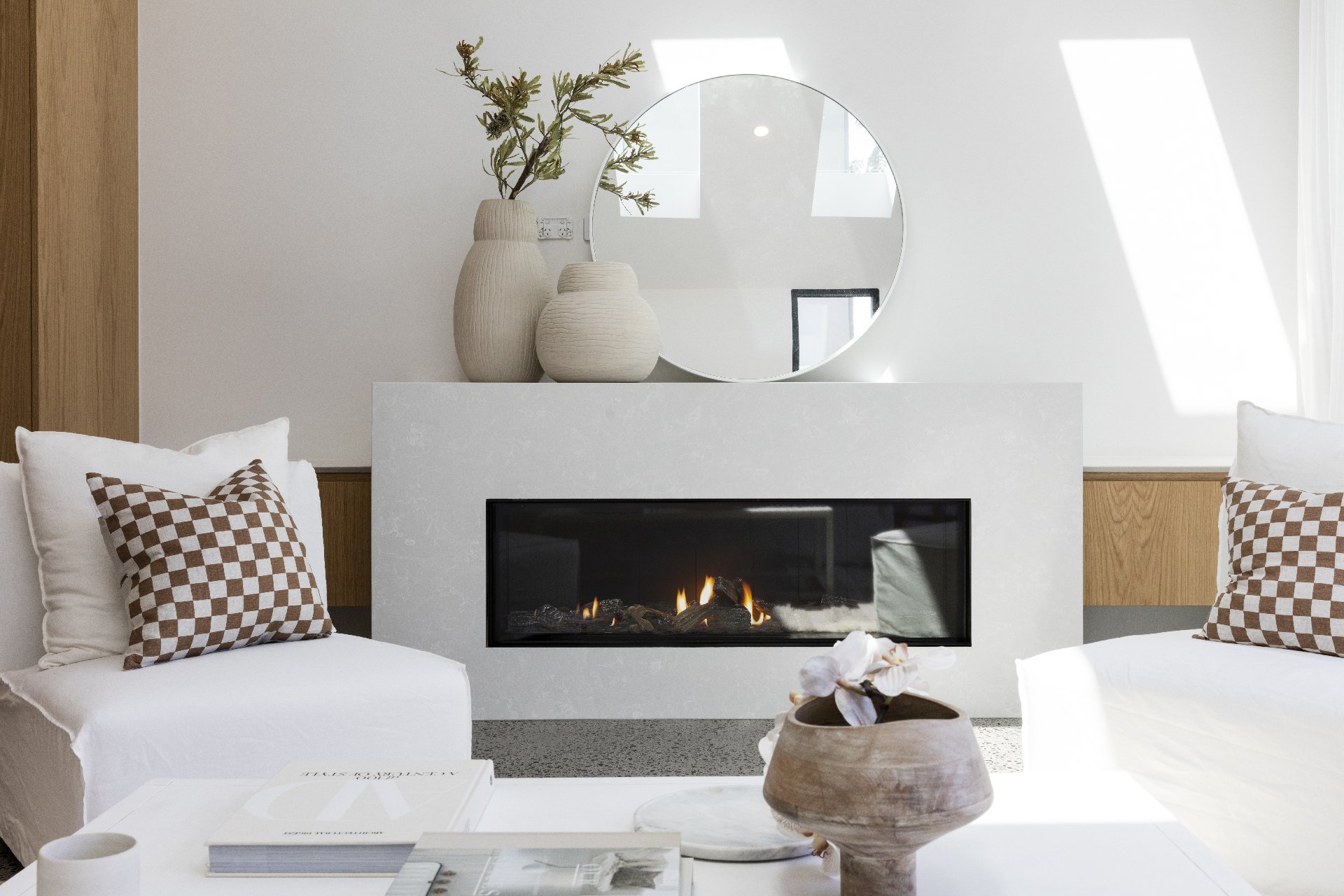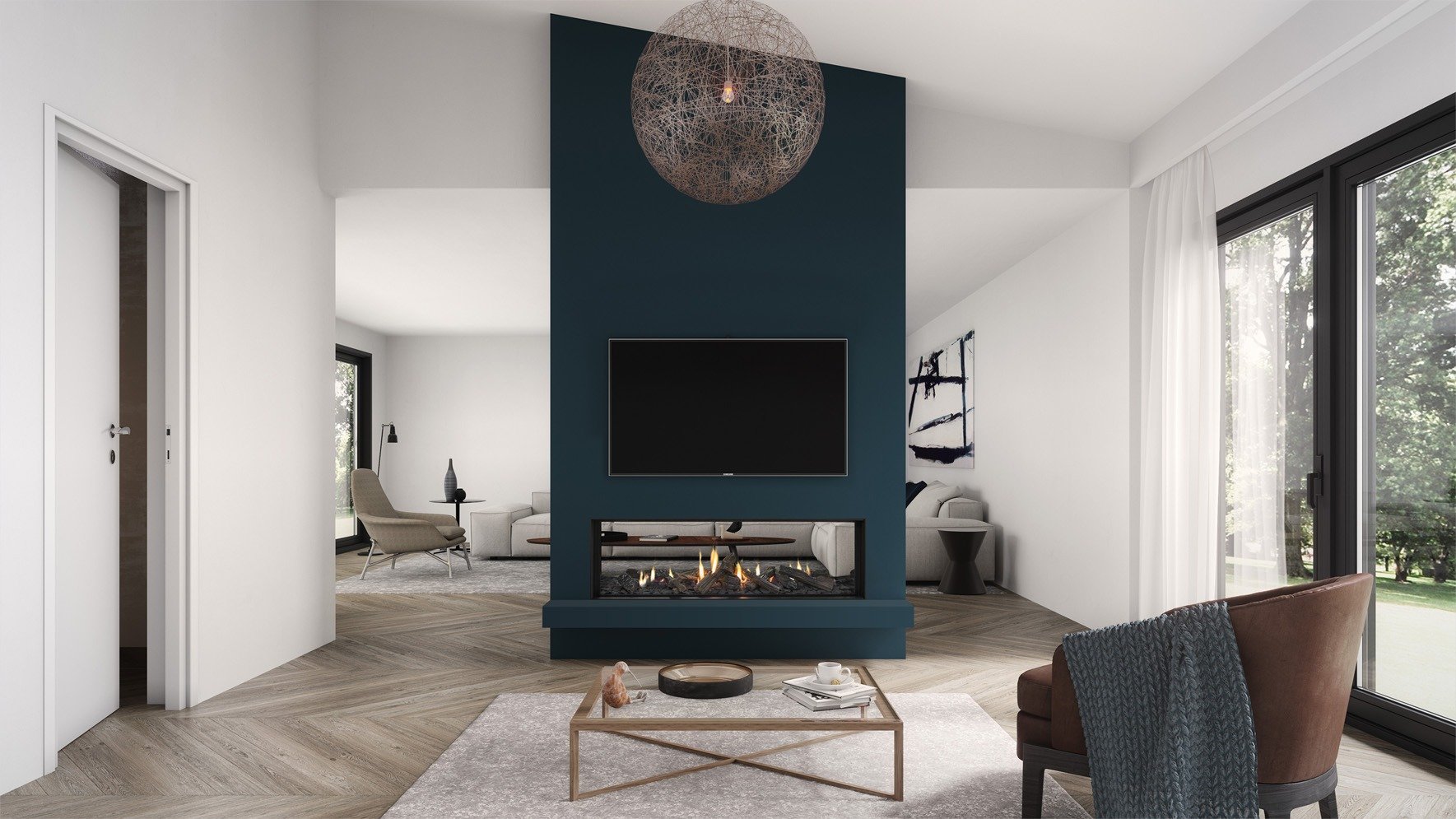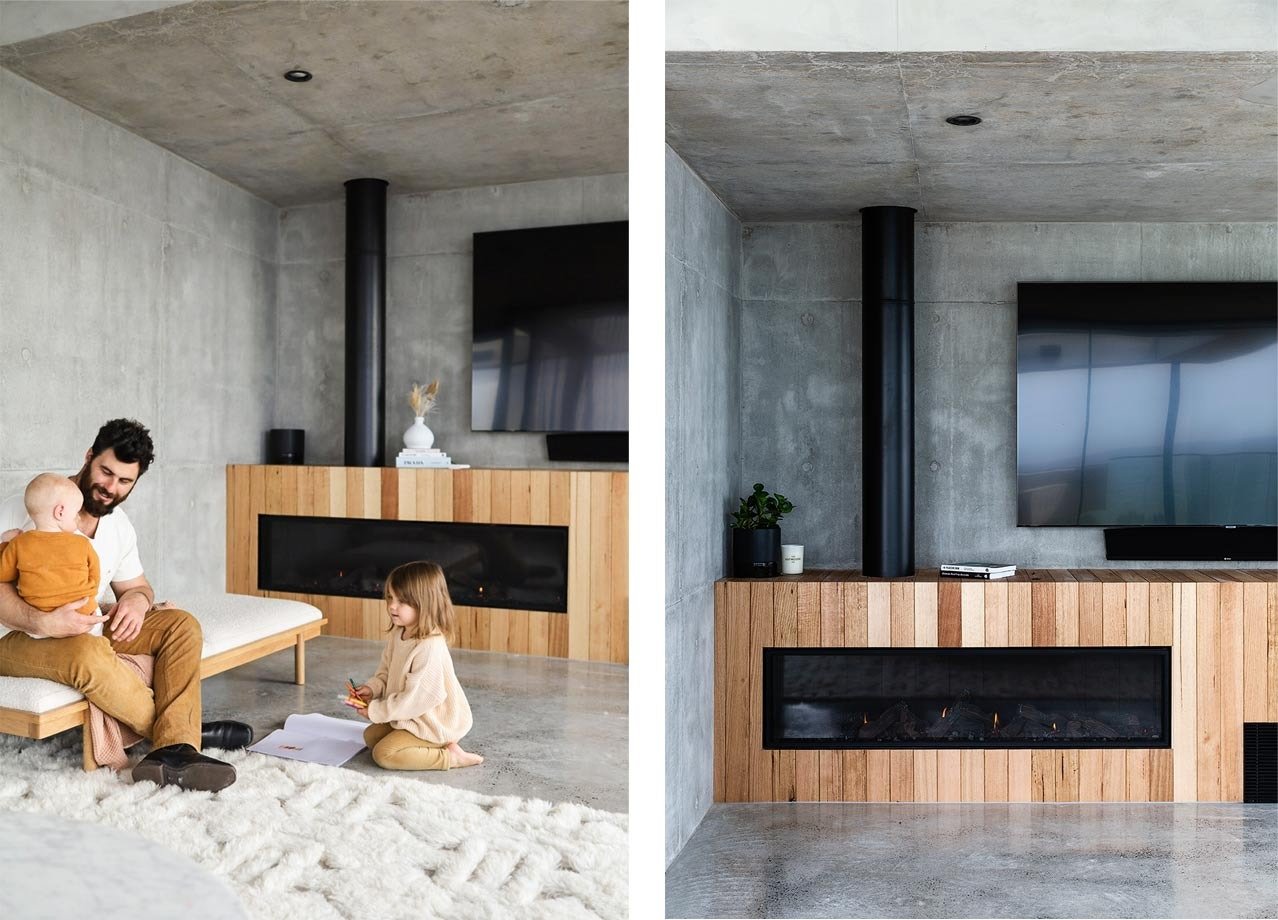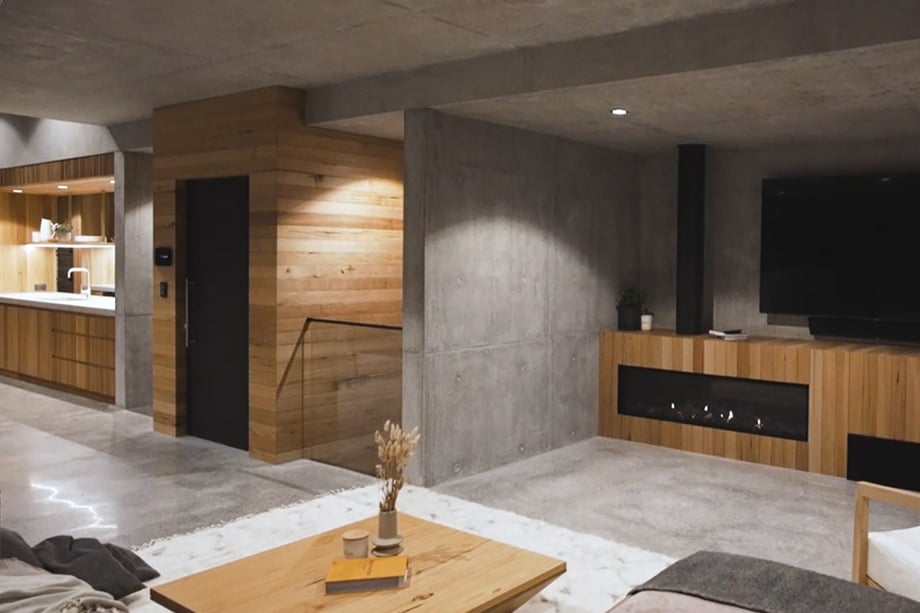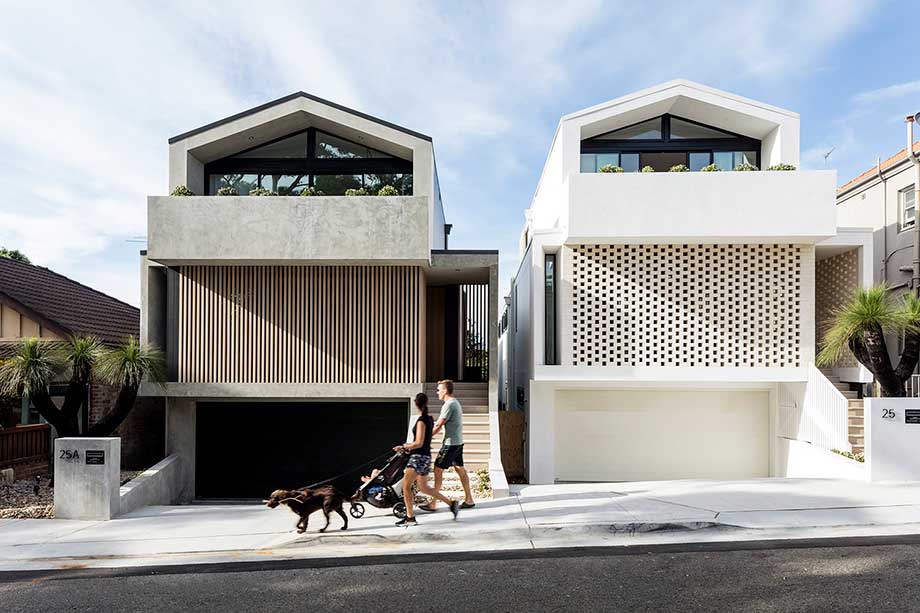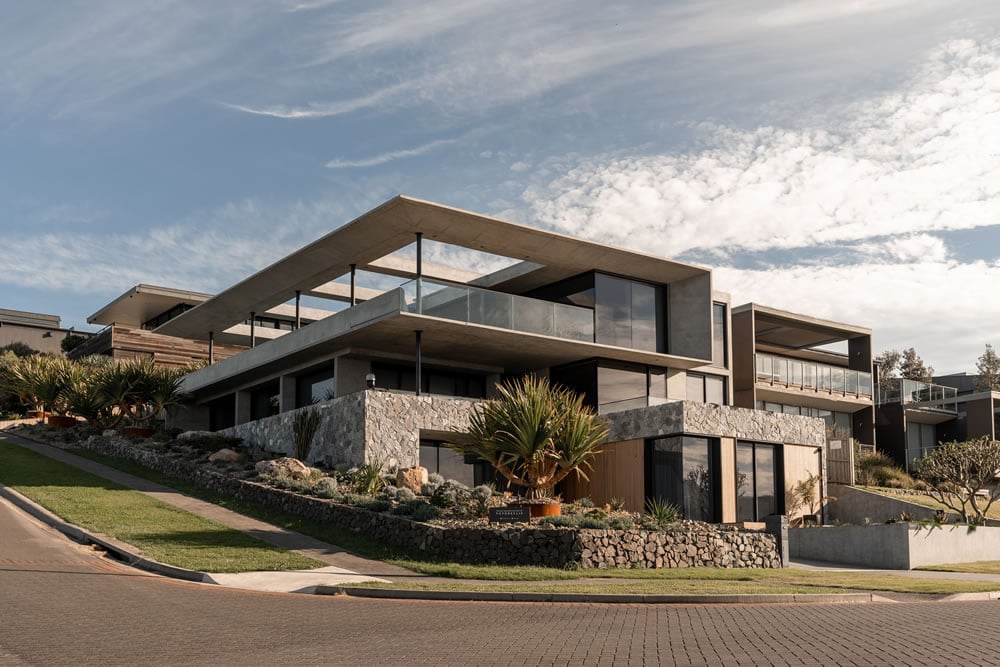The Escea DS1400 installed in Futureflip's most recent duplex project in Waverley, NSW, supplied and installed by Hot Water and Heating.
As owner of a busy design and build company with multiple developments on the go at any one time (often multi-residential), it’s important that Neil and his team plan well ahead. When it comes to specifying a fireplace, it’s no different.
“The best time to decide on a fireplace is early on in the design process as this will play a big part in the design decisions that follow,” says Neil. “A fireplace is an anchor, so it’s important to spatially allocate the fireplace within the room – you will want to situate everything around this hero feature.”
To help with this process early on, Escea has a dedicated Architectural and Building Advisory Team on hand to help with everything you need to specify the fireplace with ease – from navigating tricky installs, to complex flue runs and helping advise on surround materials.
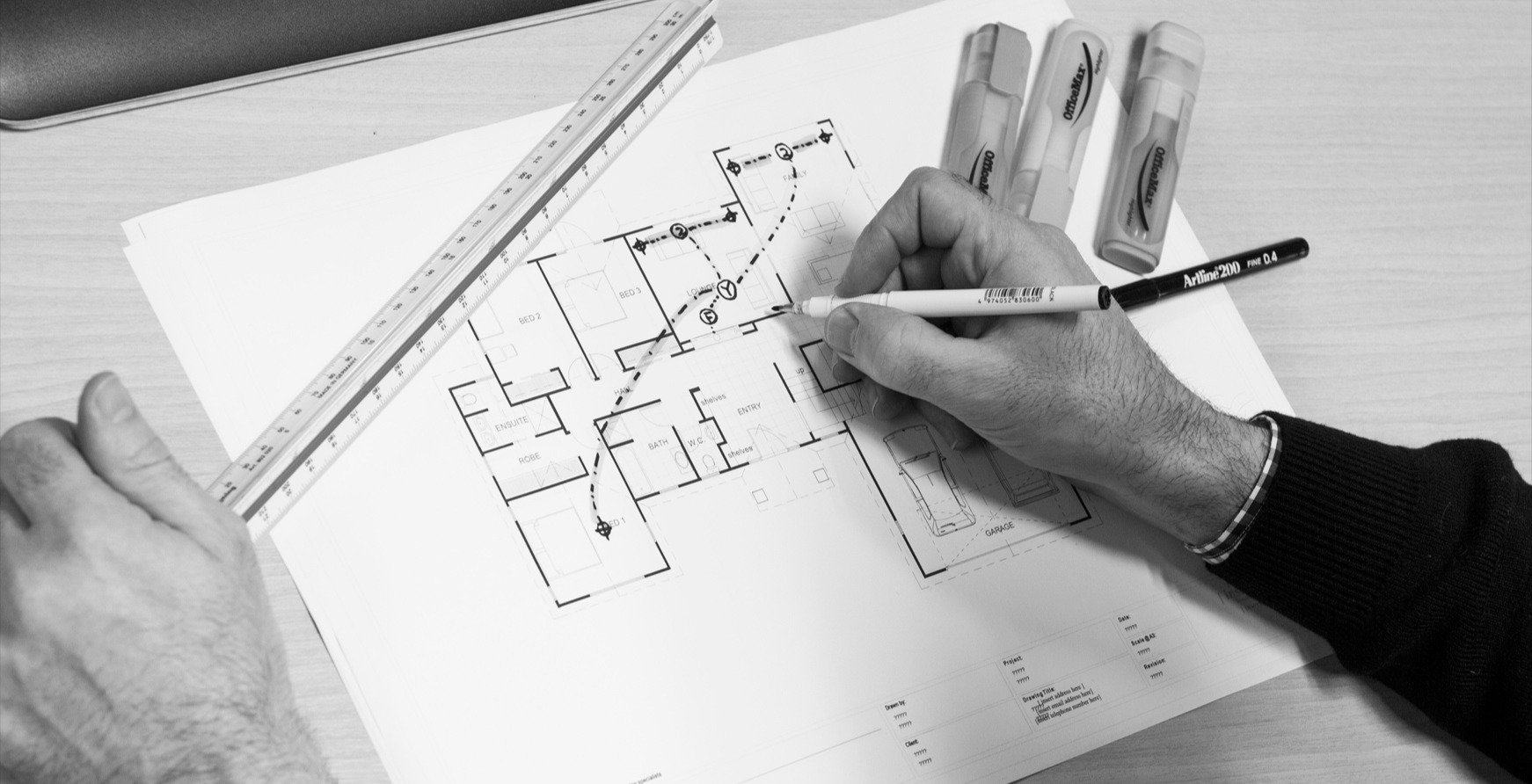 Escea has a wealth of resources available to assist you in specifying and installing your gas fireplace.
Escea has a wealth of resources available to assist you in specifying and installing your gas fireplace.
At the beginning of the project, Neil’s design team also need to ensure everything is in place to accommodate the fireplace installation, for example, flue runs and clearances.
Escea provides CAD drawings, detailed plans, and 3D images for all their fires, so designers can easily integrate the fire into their plans – they can be downloaded directly from the Escea website so are always available, whenever required. “Our design team uses the Escea CAD files regularly, it makes it quick and easy to allocate the fireplace within the design,” says Neil.
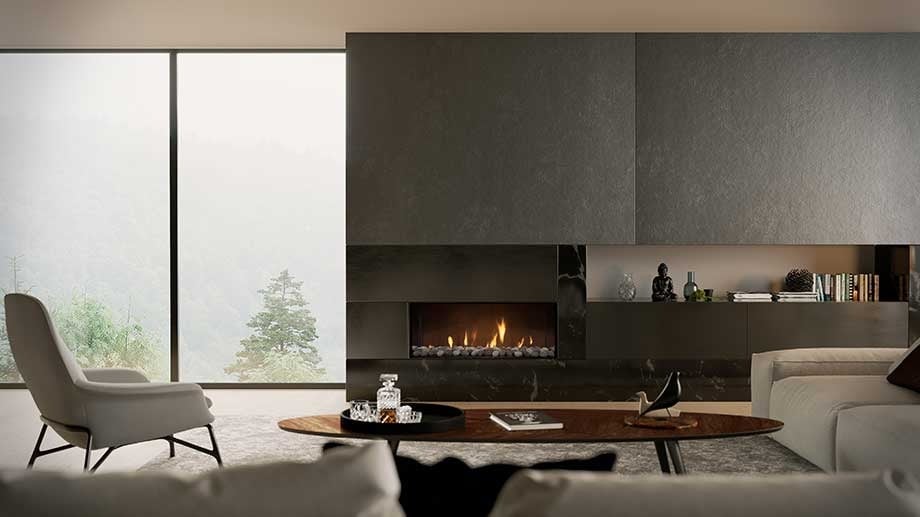 Escea’s flexible fluing and zero clearance rating allows for fireplaces to be integrated into bespoke joinery surrounds.
Escea’s flexible fluing and zero clearance rating allows for fireplaces to be integrated into bespoke joinery surrounds.
Unlike many other fireplaces, Escea fireplaces use Powered Direct Vent technology with flexible flues, making most types of installs possible. Escea flues can run through the ceiling, out the wall or even under the floor. “You can pretty much install them anywhere in the house,” says Neil.
This is particularly beneficial when it comes to designing multi-residential buildings as Escea flues can be extended up to 40m long.
When it comes to heat output, most fireplaces distribute heat directly from the front of the fireplace, heating just the room the fire is located in. However, Neil explains “A lot of people also don’t realise that you can duct the Escea DX Series, so you can heat your entire house. It draws the heat away from the fireplace and sends it to multiple, other rooms within the house.”
